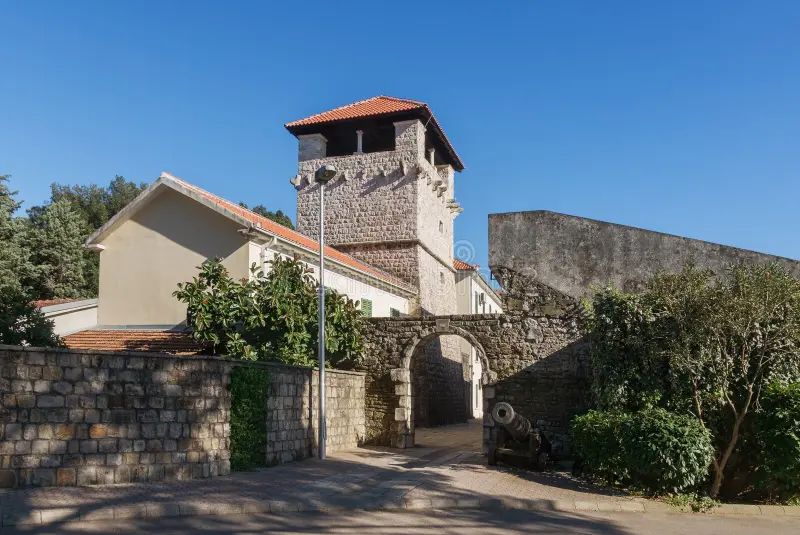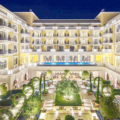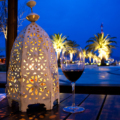Tivat’s iconic Summer House Buca represents everything Montenegro stands for as a tourist destination. It is the mounment of historical significance that allures guests to uncover more while contrasting the modern landscape of Tivat. It creates a balance with contemporary amenities and tells the story of history, politics and culture.
To find out more, keep reading and understand what makes the Renaissance summer house of Buca so special.
Tivat – An Urban Oasis
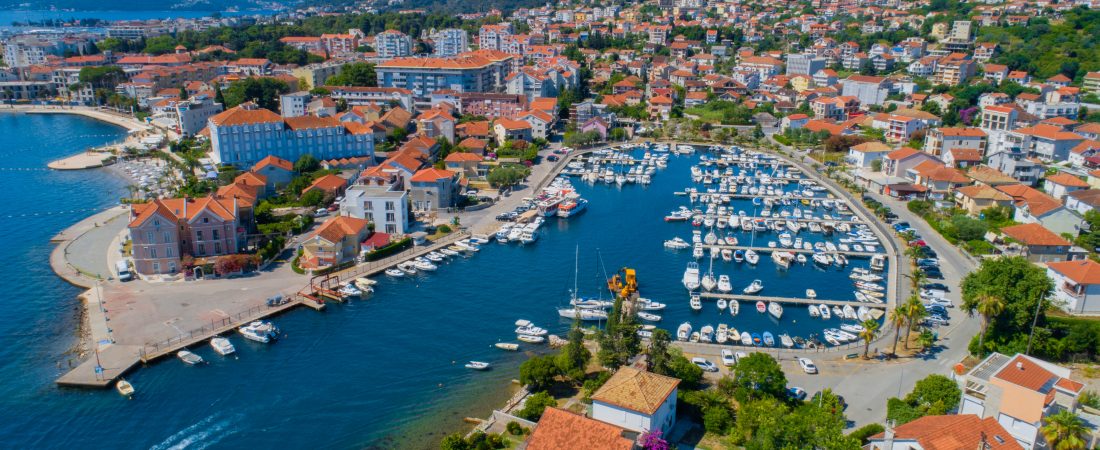
The sun-kissed jewel of the Montenegrin coast, Tivat is favourite spot of many tourists thanks to its exceptional maritime charm and chic modernity. The town features the Vrmac mountain as its backdrop, while Boka Bay opens in front of its iconic promenade.
One of the most recognizable areas of the city is the Porto Montenegro. Here, sleek yachts dot the marina, together with luxury boutiques and restaurants. Besides this monumental locations, the city buzzes with a vibrant culture, boasting numerous cafes and bars. Here, you can dive into the iconic nightlife that Montenegro especially if you visit Buddha Bar, Almara Beach Club, or the ambiance of House 5.
Timeless Treasure Summer House Buca
Besides contemporary allure of Tivat, a great way to know its history is to visit the Renaissance House Buca also known as Buca-Lekovic. This ancient palace was owned by ilustrious Buca family of Kotor. In the 14th century, they gained renown as important figures in political, social, and cultural spheres. Members of this nobel family were adverseries in many courts around Europe. Some of the members served at court of French king Charles de Valois and pope’s residence in Avignon.
The Five-Building Complex
No precise records pinpoint the construction date of the summer house, but its first traces emerged after Kotor’s earthquake in 1667. At that time, it was in the possession of the brothers Marin and Alviz Buca. Yet, the design and some details in construction suggests that the complex likely existed well before this period.
History of Buca Residence
Initially the complex consisted of five components – palace, an economic building, a courtyard area, a complete enclosure wall, and a promenade. All the masonry buildings formed one fortified structured, together with the promenade that led from the castle to the sea. The garden itself had 130 stone pillars around the premises, also featured a wooden structure covered in creepers. On one of the brick bases of the pillars is carved a lily, a symbol in the family coat of arms of Buca. Overall, the entire complex occupied an area of 120 m in length and 65 m in width.
The tower, the complex’s most striking feature, is 15 m high and located in the immediate vicinity of the main building. The inscription above the tower’s entrance reveals that “master Vicencije, son of master Mihailo from Lastva,” built it in 1548. This detail is also why historians question the time when the complex was built.
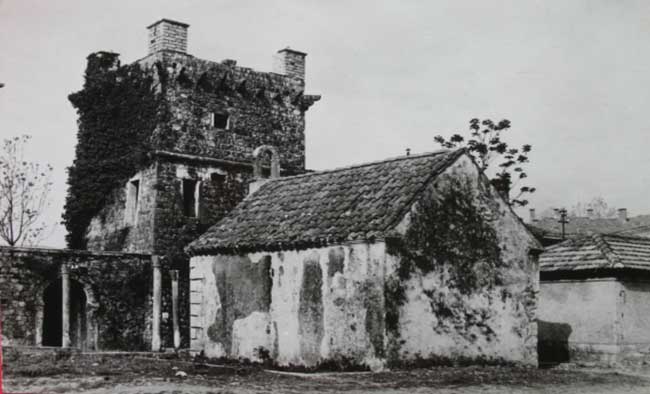
Besides these, the residence also featured the sacred alcove of the Chapel of Archangel Michael. Its baroque apperance, which contrasts sharply with the simpler Renaissance lines.
See Also: The Chedi Lustica Bay
House Buce Today
The House of Buca has stood as an iconic feature of the Tivat but it started to loose aperance as the family lost power. Thankfully, sea captain Marko Lukovic preserved it at the 18th century by purchasing it. His contributions led to the rebuilding of the residence building in the late 1800s, cementing its status as an integral component of the complex.
Ever since, the Lukovic family, brimming with generous visionaries, aimed to preserve and celebrate the majestic estate’s grandeur. In the early 20th century, they allowed the building to take on a new function as a theatre and cinema. This solidified its place as the city’s cultural epicenter.
The House of Buca, today is still carrying on its tradition. Unfortunately, not everything from the original complex is preserved. The remains now include a part of the fence wall, a tower, a family chapel, and part of the yard. These parts have undergone several restorations and reconstructions, each time meticulously preserving the monumental old design.

Nowadays, these iconic premises have been lovingly transformed into a museum space, showcasing the daily life of the Buca family. A part of the premises tourists can visit is also the medieval fortress, with its wooden balcony for defense. This edifice has retained much of the original design and stands as a splendid example of the astonishing Baroque style, which complements the central tower beautifully.
See Also: Ultimate Guide to Tivat
The cultural story of the House also continues in the attic, once a quiet place for artists to concentrate, but today a hive of activity. The little, camera-open scene in the atrium gives the many events within these ancient walls a more personal touch. Meanwhile, you also get to enjoy a summer theatre that now occupies the expansive estate gardens. Often, this space becomes a hub for literary events, art exhibits, and various cultural celebrations, attracting both visitors and residents alike.

Conclusion
Standing as a testament to the rich heritage and historic allure of Tivat, Summer House Buce is a truly iconic sample of the Renaissance and Gothic architecture of Montenegro. It is a recognisable part of the city’s skyline, and its open door as a museum invites you to explore and get to know a new side of Tivat.
In this way, you will be mesmerized by an incredible atmosphere, and more importantly, you will learn the story of historical novelties that marked life on the coast while getting a glimpse of the not-so-modern and bustling Montenegro.

